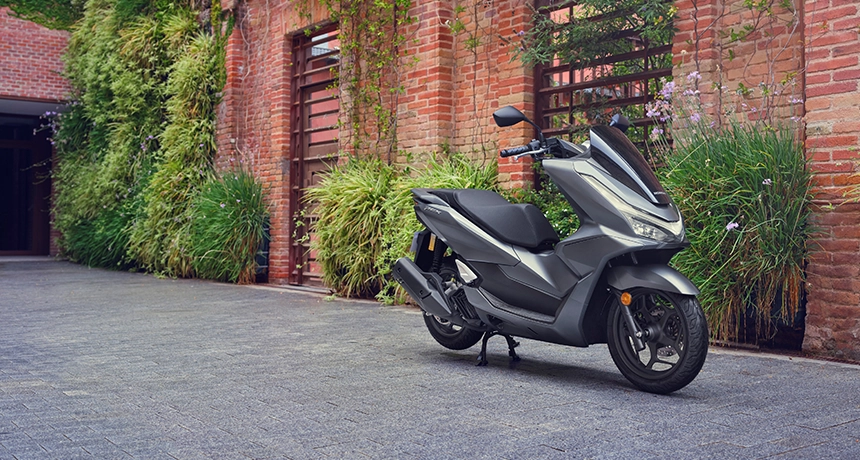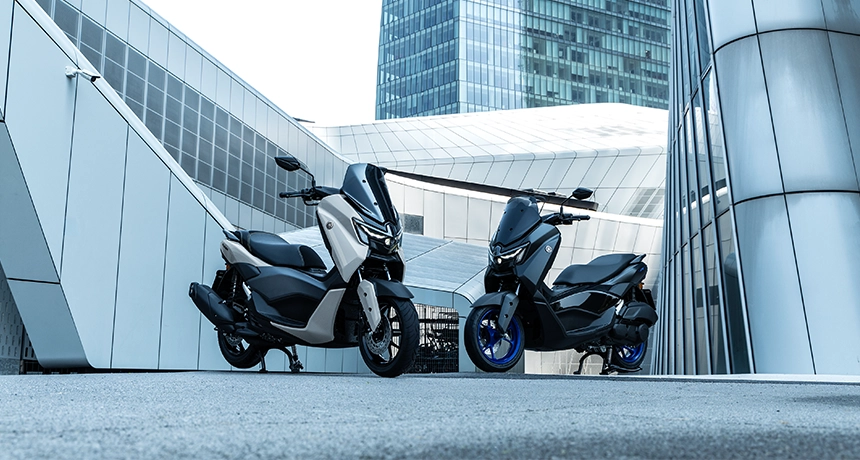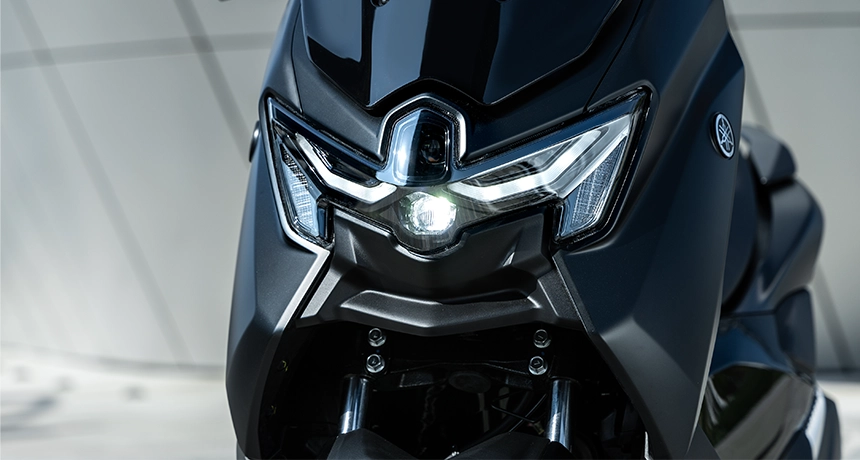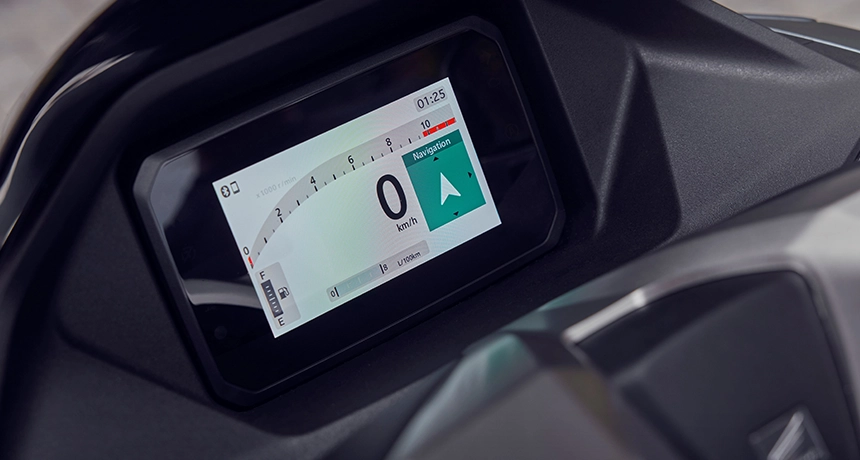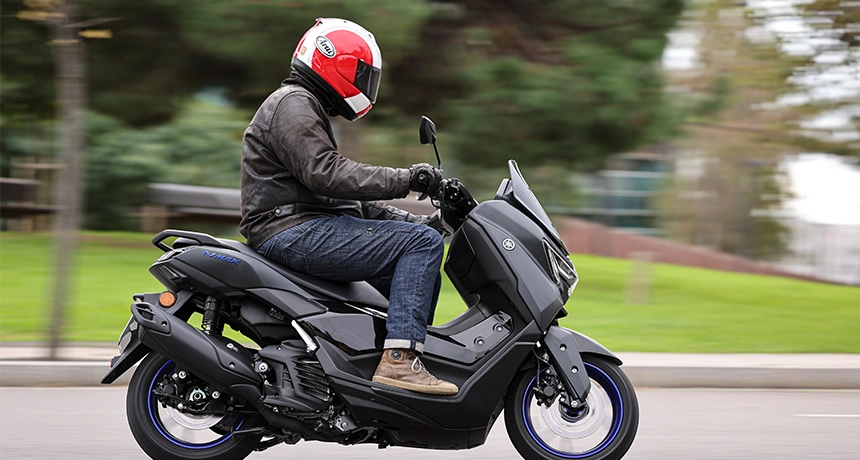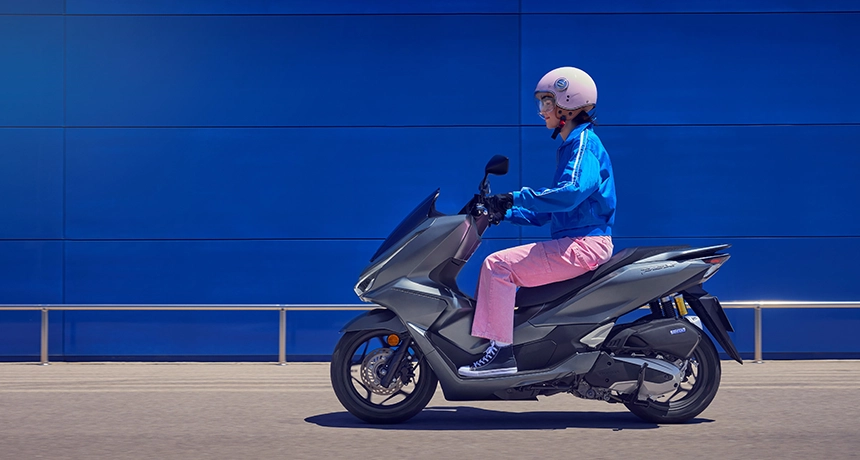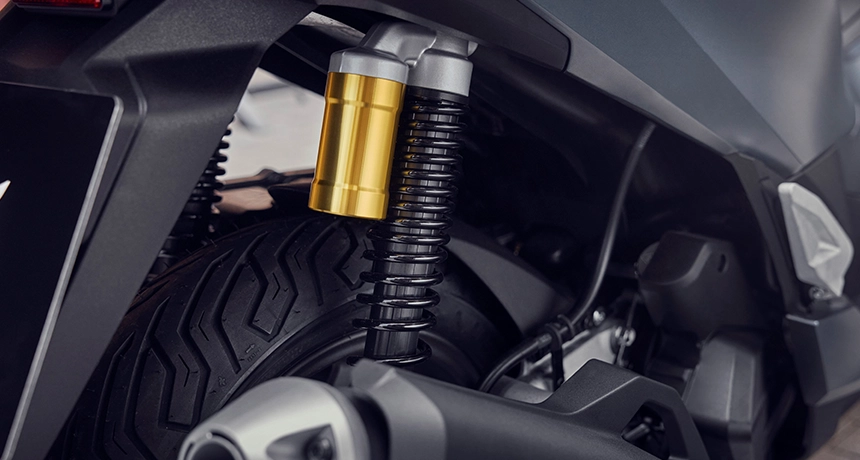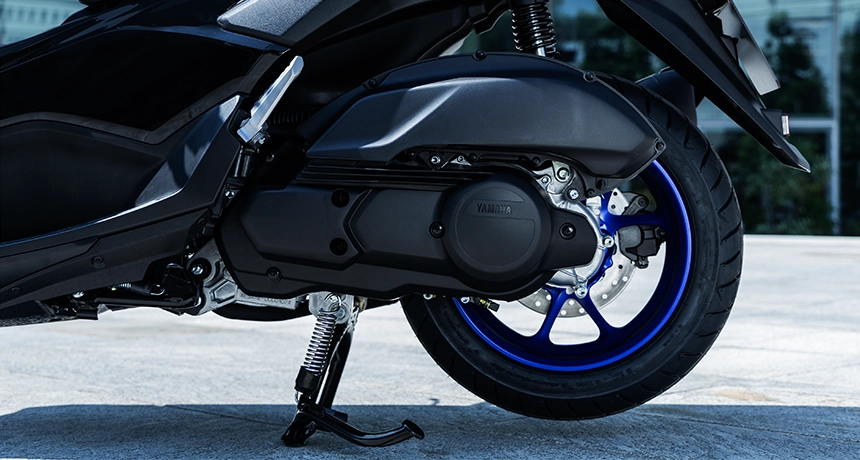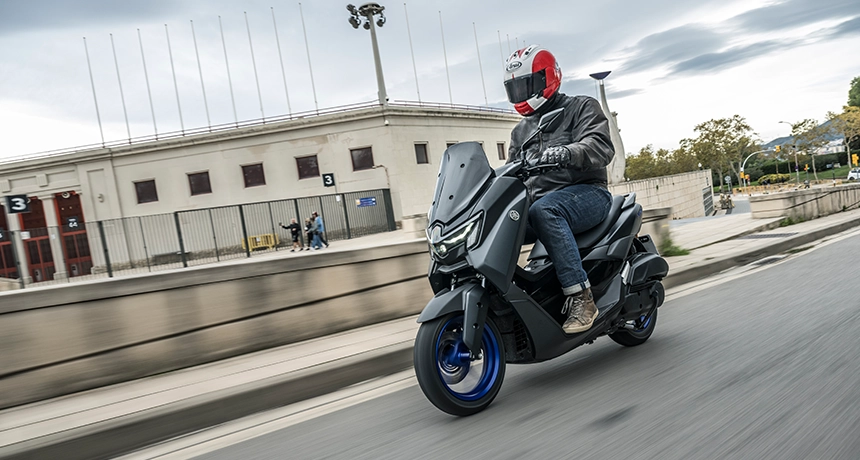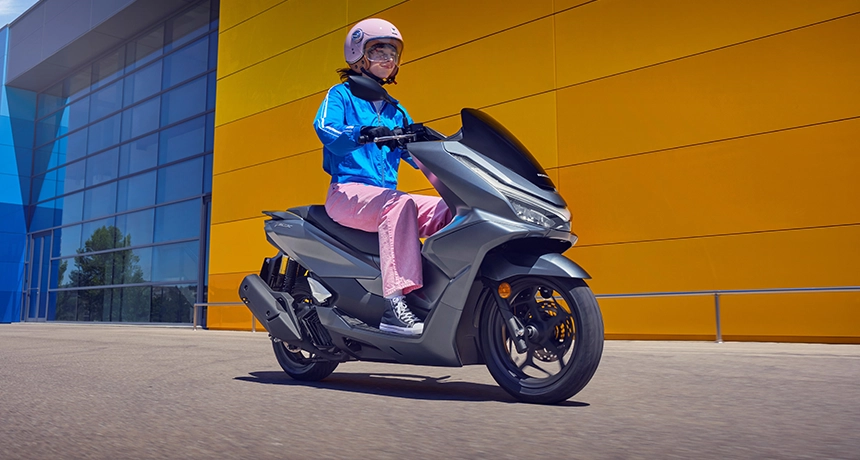No powered two wheelers are more popular – or competitive – than affordable, A1-class, 125cc commuter scooters, and the best sellers in the class are Honda’s PCX 125 and Yamaha’s NMAX 125 both of which have been significantly updated recently.
The PCX was first launched in 2010 and has been updated repeatedly, and again now for 2025 with tweaked styling and colours, improved rear brakes and suspension plus a new DX model added with new TFT dash.
But Yamaha’s NMAX is similarly impressive. First launched 2014, it was last improved in 2021, was 2024’s UK best-selling powered two-wheeler for its combination of commuter efficiency, smart style and for 2025 gets a sporty re-style, becomes Euro5+ compliant and there’s also now a more premium ‘Tech Max’ version, with TFT screen and more.
But which is the best or, more likely, suits your needs the closest? Here we compare both to find out what’s best for you.
Honda PCX vs Yamaha NMAX | Design
The PCX125 has been a polished, hugely successful performer ever since its first launch in 2010. Over that time, it’s been a consistent UK and Europe-wide best-seller with over 140,000 sold to date
For 2025 it gets another freshen up, this time with sharpened styling that adds more weather protection, new disc instead of drum rear brakes, new ‘piggy-back’ rear shock and uprated dash. In fact, in Europe there are now two PCXs: the standard model with LCD dash and the uprated DX with bigger TFT dash, Bluetooth connectivity and premium paint, the UK, however, gets only the DX. It does also mean that the available PCX is now slightly more expensive than the cheapest Yamaha.
The outgoing NMAX 125 is the best-selling powered two-wheeler of 2024 in the UK, so there was clearly not much that needed to be improved but was also updated for 2025 with fresh style and updated features and DOES come to the UK with the upspecced Tech MAX version with TFT dash, premium pain finishes and more.
As a result, the three are very competitive on price. The base NMAX is currently £3601, the Tech MAX version £300 more at £3901 and the PCX (in DX trim) bang in the middle at £3799.
Honda PCX vs Yamaha NMAX | Equipment
The new Honda PCX gets the new five-inch colour TFT with Bluetooth connectivity which is controlled by a backlit four-way toggle switch on the left handlebar. There are also more premium remote reservoir rear shocks, keyless ‘Smart key’ operation which eases ignition fuel cap and seat opening, a USB-C charging point in the glove box so you can charge your phone on the go and a decent storage space under the seat.
By comparison, Yamaha’s more basic NMAX 125 has only an LCD dash, while even the upspecced Tech MAX’s TFT is smaller at 4.2in, although it does have an extra LCD screen, and its satnav via Yamaha’s app is more sophisticated. The Honda also benefits from new ‘piggyback’ remote reservoir shocks (the Yamaha’s are conventional). All three have keyless ignition, both have front cubby holes with USB-C chargers. The new PCX has slightly more underseat luggage capacity of 30 litres with the Yamaha boasting 23-25 litres.
Honda PCX vs Yamaha NMAX: Performance
The PCX’s 125cc liquid-cooled, SOHC four-valve single is unchanged from that last updated in 2021, remains more sophisticated than most thanks to its water jacket and ‘start-stop’ feature and produces 12.3hp and 8. 6lb.ft of torque all delivered through a familiar, idiot-proof CVT ‘twist and go’ transmission.
It also has a ‘start-stop’ system and Honda Selectable Torque Control (HSTC), a rudimentary traction control system. Braking-wise, the front single 220mm disc brake for 2025 has been bolstered by an identical disc at the rear in place of the previous drum) and is again assisted by a rudimentary ABS system.
The NMAX’s liquid-cooled, four-stroke single was already efficient and economical, and power and torque are unchanged at 9kW (or 12hp) and 8.2lb.ft. It also has a rudimentary traction control system plus ‘stop-start’ while its braking, as before, is taken care of by 230mm discs front and rear with ABS assistance.
Honda PCX vs Yamaha NMAX | Ride & Handling
Although again very similar, there are notable differences between the Honda and Yamaha in terms of their chassis, too, although without a side-by side test it’s debatable how much difference they make.
The PCX is actually shorter than the Yamaha with a wheelbase of 1315 against the NMAX’s 1340mm and is slighter lighter, too, at 130kg against 132kg. Those ‘specs’ may make you think the Honda is more nimble than the Yamaha but there’s very little in it and the Honda also has the extra stabilizing effect of a 14inch front wheel along with a 13in rear while the Yamaha has 13-inchers both front and back.
Suspension-wise there’s not much in it either, with the Honda now benefitting from slightly more sophisticated ‘piggy-back’ rear shocks where the Yamaha’s are conventional, plus slightly beefier telescopic forks.
Honda PCX vs Yamaha NMAX Verdict | Which Bike is Better?
No powered two wheelers are more popular – or competitive – than affordable, A1-class, 125cc commuter scooters, and Honda’s PCX and Yamaha’s NMAX, both again updated for 2025, remain head and shoulders above the rest.
They remain closely matched, too. The Yamaha offers, via two models, the most spec options. But the Honda has arguably the best mix of both and is priced between the two as well.
Performance and handling is very closely matched, too, with the Honda perhaps shading it in terms of engine and the Yamaha for quality of ride.
But the real winners here are us. This comparison proves both machines are the best of their type, very equally matched and your choice may come down to less tangible things such as personal preference and proximity of dealer. Whichever you go for, you won’t be disappointed!

